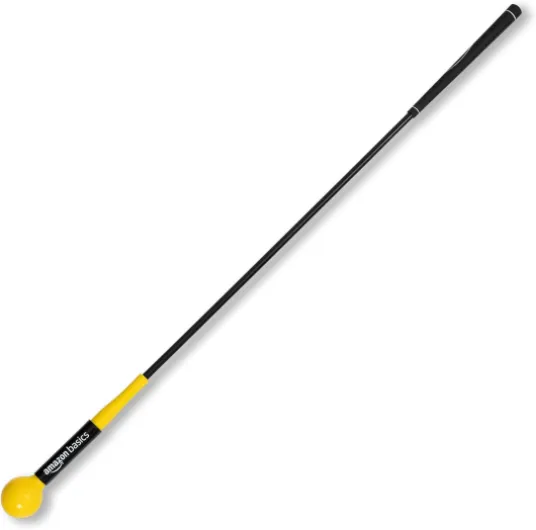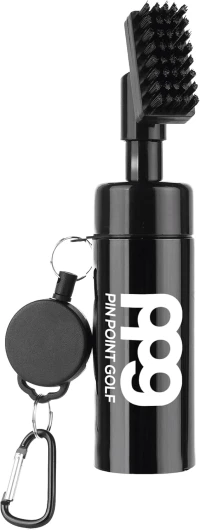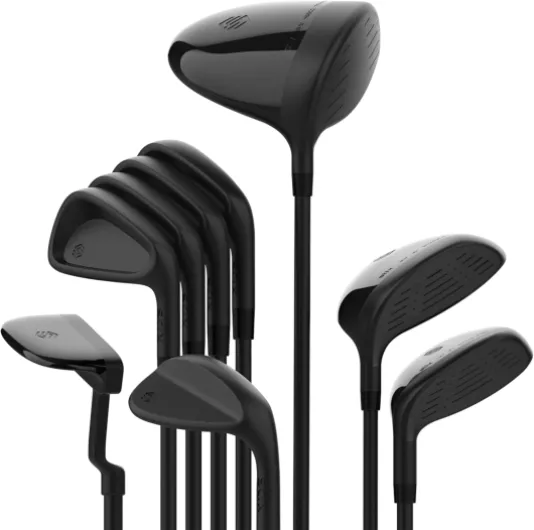
Understanding the 6 handicap in golf
Breaking down the basics of a 6 handicap
A 6 handicap in golf signifies a skilled level of play where a golfer averages scores close to six strokes over par for a typical round. This makes them better than roughly 80-90% of all golfers worldwide. According to the United States Golf Association (USGA), a handicap is essential for creating an even playing field amongst golfers of different skill levels. But what exactly allows a player to maintain a 6 handicap consistently?
Deciphering the numbers: how scores affect your handicap
To achieve and sustain a 6 handicap, golfers must thoroughly understand their course and slope ratings. These figures show the course difficulty and its relative challenge, respectively. For example, a course with a slope rating of 113 is considered average. The golfer's ability to manage different holes and keep the number of strokes within the acceptable range is critical. For clarity, a player needs to consistently score around 78 on a par-72 course.
Handling the highs and lows: maintaining consistency
Consistency is a mantra you'll hear from any seasoned golfer, like Golf.com's Jessica Marksbury, who often emphasizes the importance of regular practice. This concept blends emotional stability, strategic planning, and the physical aspect of the game.
The scoring system: breaking down the numbers
Breaking down golf scoring intricacies
Understanding how the scoring system works is crucial for maintaining and assessing a 6 handicap in golf. This section delves into the system from top to bottom, to ensure you grasp all aspects, leaving nothing ambiguous for any level of golfer.First off, the handicap system in golf levels the playing field by allowing golfers of different skill levels to compete against each other. A 6 handicap means a golfer typically scores six strokes over the course par in a round.
Important National Data and Terminologies
- According to the United States Golf Association (USGA), the average male golfer has a handicap of approximately 15
- A 6 handicap is among the top 10% of all golfers in the united states
- The USGA course rating and slope rating are critical components of the handicap index calculation. The course rating depicts the difficulty of a course for a scratch golfer, while the slope rating shows the difficulty for a bogey golfer
Explaining Key Scoring Concepts
When determining hole scores, many factors come into play. Equitable Stroke Control (ESC) is a system to adjust scores to make handicaps more accurate by eliminating high scores that could skew the results. For a 6 handicap golfer, the maximum number of strokes allowed on any hole is usually a double bogey.
Real-Life Example
As Nick Piastowski from Golf.com explains, a player who scores an adjusted gross score of 78 on a par 72 course with a course rating of 71.5 and a slope rating of 130 would use a formula to determine their handicap differential:
(Adjusted Gross Score - Course Rating) * 113 / Slope Rating
In this case: (78 - 71.5) * 113 / 130 ≈ 5.5
By calculating their differentials over several rounds, finding the average and then multiplying by 0.96, golfers can better track their progress and adjust their playing strategies accordingly.
Precision and Accuracy
The importance of precise calculations can't be overstated. A slight miscalculation, say by ignoring the USGA course rating or failing to adjust for the maximum number of strokes on a hole, can dramatically affect your handicap.
User Stories
Jessica Marksbury, in one of her columns for Golf.com, shared the story of a 6 handicap golfer who meticulously tracks every stroke and adapts their game strategy based on course conditions. This level of precision has helped in consistently maintaining a competitive handicap by reducing errors and focusing on improvement areas.
Understanding and implementing these scoring strategies is not just for maintaining a particular handicap level but also crucial for continuously improving and enjoying the game to its fullest.
Stay tuned as the next part incorporates expert insights, taking this knowledge from theory to practical, on-course application.
Expert insights on maintaining a 6 handicap
Maintain your focus and strategy
Keeping a 6 handicap in golf is no cakewalk—it’s a game of perpetual improvement. The United States Golf Association (USGA) outlines that handicap maintenance requires consistent range practice and understanding your swing dynamics. Golf.com’s Nick Piastowski advises focusing on your short game and mental toughness as these can significantly impact your scoring.
Expert tips from pros in the game
Renowned golfers Jessica Marksbury and Rory McIlroy both agree that having a solid strategy for each course is essential. You're not just hitting balls aimlessly; you’re calculating every stroke, every putt. It's not just about your gross score but understanding how the course rating and slope rating affect your game. As McIlroy puts it, “The mental game is where you win; you’ve got to stay sharp and know when to play safe or go aggressive.”
Technology to the rescue
Keeping track of your scores and improving your play has never been easier, thanks to the advent of advanced golf tech. Apps like Golf Genius and equipment like GPS rangefinders from brands like Garmin are helping golfers stay ahead of their game. According to Golf Digest, more than 40% of golfers with a 6 handicap use some form of golf GPS system to aid in better course management.
The importance of the right equipment
Investing in high-quality clubs and equipment can make a noticeable difference. Jack Hirsh from Golf.com stresses the importance of custom-fitted clubs. “Fitting your clubs to your unique swing can help reduce your handicap by ensuring better contact and control.” Custom wedges and drivers tailored to your playing style can help you squeeze out those crucial strokes.
Luxury golf products for a 6 handicap player
The essentials for a 6 handicap in golf
If you're playing at a level that demands a 6 handicap, luxury golf products can make a notable difference. Let’s begin with clubs: many mid-level golfers swear by the TaylorMade P7MC Irons. Why? According to Golf Digest, these clubs provide excellent control and feel, which is crucial for players aiming to maintain or lower their handicap. Rory McIlroy himself has used similar irons, emphasizing their precision.
Precision tools: range finders and more
When it comes to pinpointing your exact shot distance, the Bushnell Pro XE rangefinder is a favorite among low-handicap golfers. Jack Hirsh from Golf.com calls it a "game-changer" due to its unparalleled accuracy. Some experts note that using advanced tools like this can help you shave crucial strokes off your game, making it easier to stay competitive.
A look at luxury apparel and footwear
Now let's talk about the golf course. High-end apparel can significantly enhance comfort during those long rounds. A popular choice includes the Peter Millar Performance Polo. Known for its moisture-wicking fabric, it keeps golfers dry and comfortable. For footwear, many 6 handicap players opt for the FootJoy Pro/SL golf shoes. According to Jessica Marksbury from Golf.com, these shoes offer unmatched support, which is vital for maintaining stability throughout your swing.
High-tech gadgets: GPS watches
Another must-have for a 6 handicap golfer is the Garmin Approach S62 GPS watch. This gadget goes beyond basic distance measurements, offering insights on hazards, doglegs, and even club suggestions. This is particularly useful when playing on unfamiliar courses, ensuring you’re always making informed decisions.
Real-life inspiration: the success stories
Take inspiration from real-life examples: Nick Piastowski from Golf.com shared a story about a mid-level player who improved his game significantly after investing in luxury golf products. He talked about how using top-notch gear, from high-end clubs to smart rangefinders, helped the golfer understand the course better and make optimal decisions.
Case studies: successful 6 handicap golfers
Inspiring journeys of amateurs turned pros
Amateur golfers with a 6 handicap often get to rub elbows with seasoned pros and even make the leap themselves. Take the story of Jack Hirsh, who began his journey as a 6 handicap golfer and now regularly competes in high-stakes tournaments. Jack utilized consistent practice, meticulous attention to the USGA handicap system, and honed his skills on challenging courses like Pebble Beach with its stellar slope ratings. He’s become a living testament to dedication and perseverance.Navigating the game with expert advice
Jessica Marksbury, a well-respected name in the golfing community, has shared numerous insights on maintaining and excelling with a 6 handicap. According to her, players at this level must focus on mastering course management and understanding course handicap slopes. For instance, learning to play according to the course rating can shave critical strokes off your game, especially on courses with varying difficulty, like those regularly featured in her articles on Golf.com.Rise of tech-savvy handicap golfers
Another success story is Nick Piastowski, a tech-savvy golf enthusiast who leveraged advanced analytics to enhance his game. By using tools that measure slope and course rating with precision, Nick optimized his strategies for different golf courses. His expertise in integrating technology and the USGA handicap system has set him apart, making his insights invaluable for other golfers striving for improvement.Real-world application of the USGA handicap system
The tale of Rory McIlroy’s rise to fame is not just a professional endeavor but also a study in impeccable application of the USGA handicap system. Rory’s meticulous tracking of his adjusted gross scores and understanding the equitable stroke control allowed him to plan his game better and maintain a consistently low handicap. His story serves as an inspiring benchmark for amateur and mid-level golfers aiming to master their handicap.How philanthropy plays a role in golf success
In the world of successful 6 handicap golfers, philanthropy plays an unexpected but significant role. Many golfers, like Rory McIlroy and other notable figures, engage in charity events which not only improve their game but also build community. Such events offer lower-handicap players unique opportunities to compete against highly skilled golfers in a more relaxed environment, sharpening their skills and understanding of different courses.Embracing adaptive strategies from the USGA
Case studies also highlight the importance of adaptive strategies. For example, the USGA undertook detailed studies to analyze the varying impacts of handicap on different types of courses. The findings suggest that players who discuss their strategies with experienced members or a handicap committee tend to adapt better and maintain their scores efficiently. This reinforces the need to familiarize oneself with the USGA course ratings and maximum strokes allowed per hole.Overall, these stories underscore the power of dedication, adaptability, and community engagement in helping mid-level golfers master their 6 handicap, making them a crucial aspect of the golfing journey.The role of the USGA handicap system
How the USGA handicap system keeps everything fair
The United States Golf Association (USGA) has established a detailed and comprehensive handicap system that ensures every player, regardless of skill level, can compete on an equal footing. This system is essential for a 6 handicap golfer who aims to understand their position in the competitive landscape of golf.
The first thing to grasp is the handicap differential. It’s calculated using the formula: (Adjusted Gross Score - Course Rating) x 113 / Slope Rating. This seemingly complex equation simplifies how talent is measured across different courses with varying difficulties.
Another key element here is the course rating, which reflects the expected score for an expert playing on a particular course. Then there’s the slope rating, which indicates the difficulty for a bogey golfer compared to a scratch golfer. Adding these ratings gives you a clear picture of what your handicap means across different courses.
To see this in action, let’s dive into the Equitable Stroke Control (ESC), which adjusts individual hole scores to make sure one bad hole doesn't unfairly knock someone’s competitive potential. The USGA rules state that a player can't take more than a certain number of strokes on any hole, depending on their course handicap. For instance, a 6 handicap can record at most a double bogey on any hole for their adjusted gross score.
This ecosystem ensures fairness and accuracy but isn't free from controversy. Some critics argue it disproportionately favors higher-handicap players by giving them a larger allowable adjustment per hole. Yet, it generally aims to even the playing field.
Peter Sanders, a renowned statistician in the golf world, has often highlighted that, “The USGA handicap system is perhaps the most democratic element in sports. It allows someone with a 6 handicap to compete evenly with someone who has a 20.”
In essence, this structure enables all players, including those with a 6 handicap, to gauge their performance and maintain their competitive edge. Understanding this system is crucial for anyone serious about improving their game and leveraging their handicap to compete effectively across different courses.
Common challenges for 6 handicap golfers
Steer clear of the mental game pitfalls
Every golfer faces mental challenges, and this is especially true for those with a 6 handicap. Common mental hurdles include dealing with pressure, maintaining confidence, and managing expectations. A 2017 study by Dr. Bob Rotella emphasized that mental fortitude is just as important as physical skill in achieving a consistent handicap.
The issue of consistency
Maintaining a 6 handicap involves achieving consistency in play. Professionals like Rory McIlroy stress the importance of developing a repetitive and effective swing. According to coach Hank Haney, one problem is a lack of practice regimen. He states that players often need to maintain a fixed schedule to stay in the groove.
Equipment woes
Having the right equipment is crucial for a 6-handicap golfer. Incorrect fittings or inappropriate clubs can lead to erratic performance. According to Golf.com, the right set of clubs tailored to your game can significantly impact your performance. Expert club fitter Nick Piastowski points out that custom-fitted clubs can lead to a drop in a player’s handicap by at least two strokes.
Staying competitive under the USGA handicap system
The USGA handicap system is a double-edged sword for many. While it offers a fair chance for competition, it also can be challenging to maintain your current handicap. Research from the United States Golf Association highlights that managing handicap differentials and understanding course rating and slope are vital for maintaining a competitive edge.
Injuries and physical impairments
For 6-handicap golfers, physical health is paramount. Injuries or physical constraints can quickly derail performance. According to a report by the American Orthopedic Society for Sports Medicine, lower back injuries are the most common among golfers, affecting over 34% of players. Chiropractors like Dr. George Gregory recommend routine check-ups and exercises to maintain peak physical condition.
Future trends in golf handicaps
Tech developments shaking up handicap calculations
Today, with rapid technological advancements, golf handicaps could see significant innovations. A Golf Digest report revealed that digital tools like mobile apps to track handicap almost in real-time are reshaping the game. These tools use algorithms to process scores, number strokes per hole, and handicap differentials, providing personalized insights for refining one's play.
Wearable tech to aid precision
Beyond apps, wearable tech like GPS-enabled watches and smart sensors attached to clubs are growing popular. Experts like Jessica Marksbury, a senior writer at Golf.com, emphasize their role in understanding course slope ratings and strategic plays. By recording minute-by-minute data, wearables allow players to adjust their strategies for each hole, keeping their scores competitive.
AI innovations in your golf bag
Artificial Intelligence (AI) in golf analytics provides useful predictions on optimal shot selection. Rory McIlroy, a major professional golfer, lauds how AI-driven insights have enhanced training regimes by predicting score outcomes based on-shot history and current conditions. AI can dissect your swing pattern, suggesting precise tweaks to lower your handicap.
Greater access to data and resources
As technology democratizes, players of all levels can access detailed resources formerly available only to elite golfers. Websites like the United States Golf Association (USGA) offer deep dives into topics like USGA course ratings and equitable stroke control. For golfers aiming to maintain their 6 handicap, understanding these resources is crucial in optimizing play strategy.
Custom-fit clubs powered by tech
The rise in 3D printing and custom-fit technology is revolutionizing golf clubs. Nick Piastowski from Golf.com reports that personalized clubs, designed to match a player's unique swing style, are becoming mainstream. This innovation makes it easier for 6 handicap players to enhance their play, fine-tuning each club for maximum performance on the course.
Luxury meets tech
As tech evolves, so does luxury in golf. High-end brands are integrating technology into their gear, from laser rangefinders to smart golf carts. In the luxury golf products segment, advancements mean you enjoy comfort and precision, even in challenging conditions. For 6 handicap players, this blend of opulence and tech is an unbeatable combination for mastering mid-level play.

















